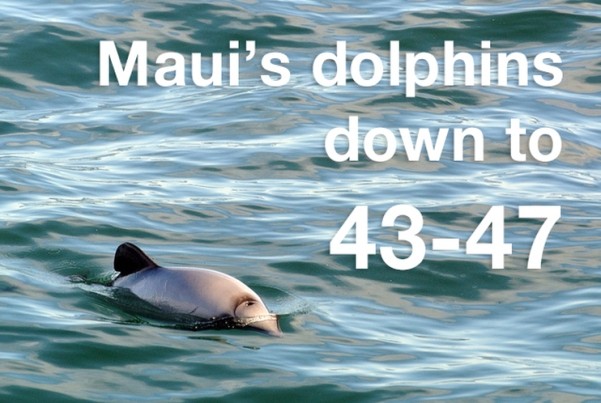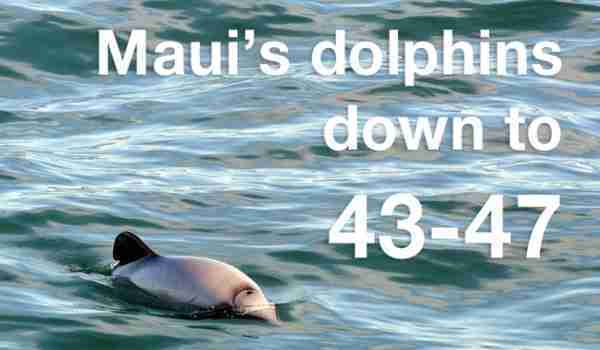Media Release: NABU International Foundation for Nature
 Numbers of the world’s smallest and rarest marine dolphin have hit an all time low of 43-47 individuals, including just 10-12 adult females. The future New Zealand’s critically endangered Maui’s dolphin will form part of the discussions held by 200 of the world’s leading cetacean scientists who are gathering in San Diego for the annual meeting of the Scientific Committee of the International Whaling Commission. The 2015 meeting of the IWC Scientific Committee is being held at the Marriott Marquis, San Diego Marina, United States of America from the 19th of May to the 3rd of June.
Numbers of the world’s smallest and rarest marine dolphin have hit an all time low of 43-47 individuals, including just 10-12 adult females. The future New Zealand’s critically endangered Maui’s dolphin will form part of the discussions held by 200 of the world’s leading cetacean scientists who are gathering in San Diego for the annual meeting of the Scientific Committee of the International Whaling Commission. The 2015 meeting of the IWC Scientific Committee is being held at the Marriott Marquis, San Diego Marina, United States of America from the 19th of May to the 3rd of June.
NABU International’s Head of Endangered Species Conservation and leading Maui’s dolphin expert, Prof Liz Slooten, will present the latest population figures and are warning that unless the level of fisheries protection is increased significantly, Maui’s dolphins could become extinct in 15 years.
Maui’s dolphins are a subspecies of Hector’s dolphins and occur exclusively in shallow coastal waters up to depth of 100 waters meters off the west coast of New Zealand’s North Island.
Maui’s dolphin numbers have dropped by some 97 percent as a result of fishing since the 1970s. By 2004, there were 111, and by 2010/11 the population had reached just 59. Because protection from gillnets extends over less than 20 percent of Maui’s dolphin habitat and less than five percent for trawling, dolphins continue to die in fishing nets as bycatch. An upsurge of seismic surveys and fossil fuel extraction in or near the dolphins’ home further increase the risks for this already small and declining population. The absence of manmade deaths would set
Maui’s dolphins back on the road to recovery and allow numbers to grow to 500 individuals in 87 years.
New Zealand has so far shirked its responsibility to protect the last Maui’s dolphins. For three years running, IWC scientists have urged the New Zealand government to ban the use of gillnets and trawling across their entire habitat. But New Zealand has stubbornly ignored the scientists and is selling out this rare species for shortsighted economic reasons.
Because Maui’s dolphins can only cope with one human-induced death every 10-20 years, immediate conservation measures are urgently required. These new figures are an unmistakable wakeup call: New Zealand has to stop placing the interests of the fishing industry above biodiversity conservation and finally protect the dolphins’ habitat from harmful fishing nets, seismic airgun blasts and oil and gas extraction. Unless this happens, Maui’s dolphin extinction is a matter of when, not if. But instead of taking action, the New Zealand government is celebrating the extension of gillnet restrictions by three percent back in 2012/13 as a conservation victory, although this merely delays the dolphins’ demise by a handful of years. The futile five-year research programme tabled by New Zealand at this year’s IWC Scientific Committee meeting is a further attempt to muddy the waters and play for time, which Maui’s dolphins can’t afford.

